Consejos para el comprador: Consideraciones para seleccionar el cabezal de mandrinar adecuado
-
Descubra por qué elegir el cabezal de mandrinar adecuado es esencial para lograr resultados precisos y de alta calidad, a la vez que se optimiza la vida útil de la herramienta y la productividad.
-
Explore la amplia gama de opciones de herramientas de mandrinado, incluyendo cabezales de mandrinado para desbaste, acabado, digitales, automáticos y especiales, así como sus características y usos únicos.
-
Aprenda cómo factores como los requisitos de la aplicación, las propiedades del material y la estabilidad de la herramienta afectan las operaciones de mandrinado y cómo calcular el costo real de sus herramientas.
En la industria metalúrgica, sabemos que hacer agujeros es mucho más complicado de lo que parece. Ya sea que estés realizando operaciones de desbaste o trabajos de acabado de precisión, hay muchas consideraciones que intervienen en el proceso. Comenzar con la cabeza de taladro correcta es lo primero, y hay varios aspectos a considerar para tomar una decisión informada.
¿Por qué es importante la selección de herramientas de taladrado?
La selección de herramientas de taladrado es particularmente crucial porque estas operaciones generalmente se realizan al final del ciclo de la pieza, después de haber invertido tiempo y dinero en mecanizar la pieza hasta ese punto. Un solo agujero que esté ligeramente fuera de especificación debido a una herramienta mal elegida podría significar que toda la pieza se deseche.
Pero no se trata solo de la pieza terminada. Elegir las herramientas correctas puede prolongar la vida útil de la herramienta (ya que se evita el desgaste prematuro) y aumentar la productividad, lo que impacta significativamente en los resultados finales.
Comprendiendo los diferentes tipos de herramientas de taladrado
Existen muchas formas de hacer un agujero, así que comencemos explorando los diferentes tipos de herramientas de taladrado:
Cabezas de taladrado para desbaste
- Diseñadas para remover grandes cantidades de material
- Construidas con mayor rigidez para soportar mayores profundidades de corte
- Capaces de manejar mayores pares y fuerzas axiales
- Eficientes para realizar pasadas consistentes y remover material
- Usualmente herramientas de doble cortador que se pueden usar en configuraciones de corte equilibrado o escalonado
Cabezas de taladrado de acabado
- Optimizadas para remoción precisa de material
- Equilibradas para corte a alta velocidad
- Perfectas para cumplir con especificaciones exactas
Cabezas de taladrado digitales
- Reducen el riesgo de errores humanos gracias a la pantalla digital para ajustes precisos
- Resolución de Ø.00005" (serie EWE), lo que mejora la precisión para tolerancias estrictas
Cabezas de taladrado automáticas
- La última innovación con capacidad de ajuste totalmente automática (serie EWA)
- Realiza operaciones de taladrado en bucle cerrado sin operador humano
- Elimina la necesidad de detener el ciclo de mecanizado para ajustar manualmente la herramienta
Cabezas de taladrado especiales
- Generalmente diseñadas para realizar múltiples operaciones en una sola pasada (desbaste y acabado, o acabados de diferentes diámetros en línea)
- Incluyen accesorios para cabezas de taladrado estándar, como taladrado inverso, ranurado de cara y cartuchos para biselado
- Pueden diseñarse con ángulos específicos para eliminar operaciones secundarias en la pieza
Brocas
- Cualquier herramienta con capacidad de corte central para producir agujeros en materiales sólidos
Consejos para seleccionar la herramienta de taladrado adecuada
Ahora tienes una visión general de tus opciones de herramientas de taladrado, pero ¿cómo tomar la decisión final? Estos son nuestros consejos profesionales al evaluar la selección de herramientas:
Consideraciones de aplicación
Primero que nada, considera las aplicaciones típicas de tu taller. Si la mayoría de tus operaciones dependen de tipos específicos de herramientas dedicadas, la decisión será más enfocada. Pero para talleres con una gama más amplia de trabajos y necesidades, conviene considerar un inventario de herramientas más versátil. Por ejemplo, varios tamaños de portainsertos para cabezas de taladrado específicas. Aquí también entran en juego las herramientas modulares: contar con una variedad de componentes modulares permite flexibilidad de reconfiguración. Asegúrate de que tus componentes modulares sean lo más rígidos y de alta calidad posible, ya que la vibración puede ser un problema en configuraciones modulares largas.
Preprocesamiento de la pieza
¿Cómo se inicia la pieza? Los agujeros fundidos o forjados pueden no tener el tamaño o las condiciones ideales para operaciones de acabado. Por ello, considera una operación de desbaste adicional antes del acabado. Esto no solo garantiza un resultado final conforme a especificaciones, sino que también evita desgaste de las herramientas de acabado y reduce costos.
Material de la pieza
Los materiales más difíciles de mecanizar requieren no solo insertos especializados con sustratos resistentes y recubrimientos especiales, sino también la geometría de inserto correcta. Por ejemplo, materiales difíciles requieren geometrías de corte más afiladas. Además, materiales con viruta larga necesitarán un montaje de herramienta con mayor espacio para evacuación de viruta.
Estabilidad y rigidez
La estabilidad es vital en todas las operaciones de mecanizado, y el taladrado no es diferente. Asegúrate de que tu máquina y husillo no contribuyan a vibraciones excesivas y de utilizar herramientas de contacto dual con licencia. Cuanto más contacto haya entre el husillo de la máquina y el cono de la herramienta, menor será el riesgo de vibraciones perjudiciales. Finalmente, la longitud de calibración y la profundidad de taladrado pueden afectar la estabilidad (más adelante se explicará).
Tolerancias y acabados superficiales
Cuanto más estrictas sean tus tolerancias y mayores tus requisitos de acabado, más atención deberás prestar a las opciones de taladrado de precisión. Incluso cuando las tolerancias sean más relajadas, las herramientas de alta precisión pueden mejorar la productividad y reducir los costos de herramientas. Beneficios incluyen mayor vida útil de la herramienta, configuraciones y operaciones más rápidas, y menos piezas desechadas.
Profundidad y longitud de calibración
La longitud de calibración es la distancia desde el husillo de la máquina hasta la característica de la pieza, mientras que la profundidad de taladrado es la profundidad real del agujero. Longitudes excesivas en cualquiera de estas áreas pueden requerir montajes de herramienta más largos, lo que puede comprometer la rigidez, productividad y calidad de la pieza terminada. Los componentes modulares de alta calidad pueden maximizar la rigidez sin sacrificar el alcance, pero considera estos consejos adicionales:
- Presta atención a la relación longitud-diámetro. Cuando las herramientas se extienden más de cuatro veces el diámetro, la rigidez puede ser un problema.
- Si necesitas montajes extra largos, consulta con un experto en taladrado que pueda ofrecer soluciones para minimizar vibraciones.
Cómo evaluar el costo de las herramientas de taladrado
El precio de lista NO es el costo real de tus herramientas. Al contrario, entra en juego el costo de por vida. En este sentido, lo mejor es medir tu costo por agujero. ¿Cuántos agujeros puede producir una herramienta versus otra? Además, ¿una herramienta te permite completar trabajos más rápido, asumir más trabajos o reducir costos de mano de obra? Todo esto impactará en tu resultado final. Al final, una inversión inicial en herramientas de mayor calidad siempre genera un retorno sólido.
Independientemente de tus aplicaciones y necesidades, considera trabajar con expertos que conozcan a fondo el taladrado. En BIG DAISHOWA, escribimos el libro sobre taladrado, así que entendemos las particularidades de tus operaciones específicas y podemos recomendar soluciones para numerosos desafíos de taladrado. Habla con un experto hoy.
¿Te pareció interesante o útil? Haznos saber tu opinión agregando tus comentarios o preguntas a continuación.










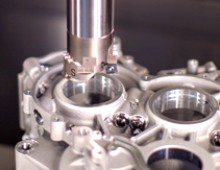
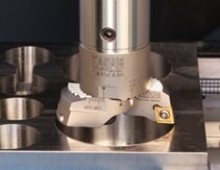
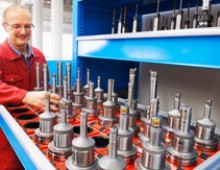
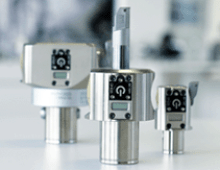
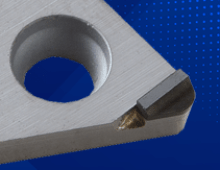

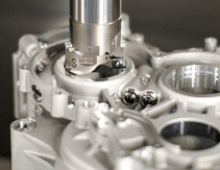
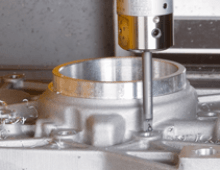
Añadir nuevo comentario